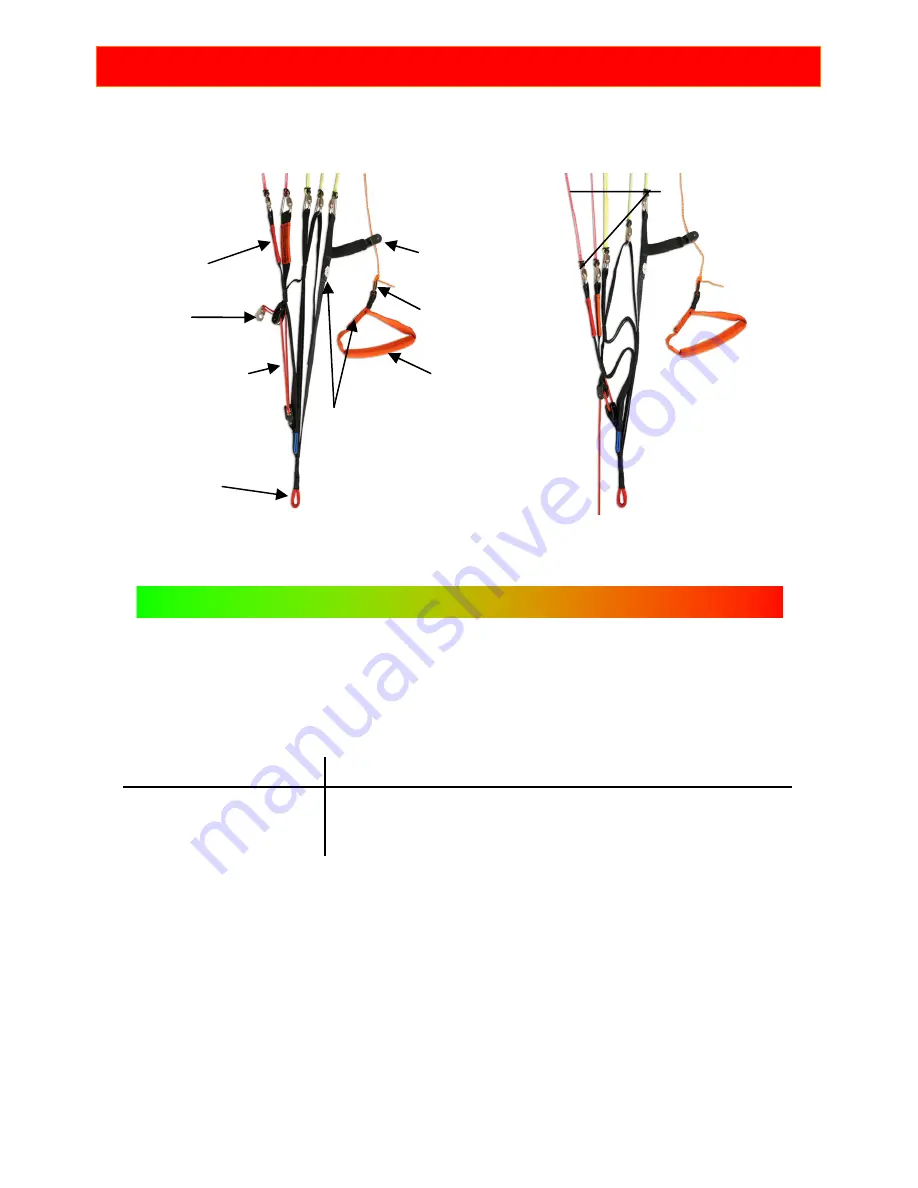
8
RISER
Risers's lenghts Muse 3
A A1 B C D
Trim-position
520 520 520 520 520
Accelerated
360 360 380 450 520
The lengths are measured from main attachment point to the lower edge of rapid links.
Color
marking
Loop for main
karabineer
Trimm postion
Accelerated position
brake handle
Change of the
angle of attack
A A1B C D
A A1 B C D
Brakeline
pulley
Magnet
button
Pulley
Swivel
Accelerator
Faster
Slower
Summary of Contents for Muse 3
Page 1: ...1 ...
Page 23: ...23 LINE PLAN MUSE 3 ...
Page 26: ...26 CHECKS Name Company Date Signature Stamp ...
Page 28: ...28 ...









































